Introduction: I have been engaged in the integrated circuit industry for over 20 years. In recent years, with the rapid development and widespread application of storage chip technology, I have also had the privilege of entering this field. My industry experience is still limited, and some of the data and content in this article are based on my work experience and online resources. I hope for your corrections and mutual exchanges!
What is SPI NOR FLASH?
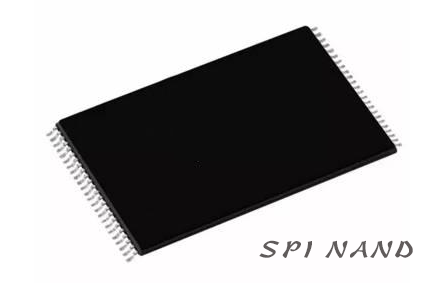
NOR Flash is a type of non-volatile flash memory technology created by Intel in 1988. NOR and NAND are the two main types of non-volatile flash memory technologies currently on the market. Intel first developed NOR flash technology in 1988, fundamentally changing the landscape that was previously dominated by EPROM and EEPROM. Shortly thereafter, in 1989, Toshiba introduced the NAND flash structure, emphasizing lower cost per bit and higher performance, and allowing for easy upgrades via interfaces like disks. However, even after more than a decade, many hardware engineers still cannot distinguish between NOR and NAND flash.
Terms like “flash memory” are often used interchangeably with “NOR memory.” Many industry professionals are also unclear about the advantages of NAND flash technology over NOR technology, as in most cases, flash memory is only used to store a small amount of code, making NOR flash more suitable. NAND, on the other hand, is an ideal solution for high data storage density.
NOR’s characteristic is execute-in-place (XIP), allowing applications to run directly in flash memory without needing to read the code into system RAM. NOR has high transmission efficiency and is cost-effective at small capacities of 1-4MB, but its low write and erase speeds significantly affect its performance.
NAND structures can provide extremely high cell density, achieving high storage density, and have fast write and erase speeds. The challenge with NAND is that flash management requires special system interfaces.
Exploring the Applications of SPI NOR FLASH in the Industry
Currently, 90% of the global market is dominated by the top five NOR flash companies: Micron, Winbond, Macronix, Cypress (which has acquired Taiwan’s Etron Technology), and GigaDevice. The remaining 10% of the market is occupied by domestic companies such as XMC (Wuhan Xinxin), PUYA, BOYA, YICHU, XTX, and other brands. The industries involved include toys, mobile phones, digital cameras, computers, home appliances, digital set-top boxes (DVB, DAB), security, Bluetooth speakers, smart hardware, IoT, AI applications, automotive electronics, and industrial control applications.
Current wafer manufacturers for NOR Flash include TSMC, China Resources Microelectronics, United Microelectronics, Hynix, Hua Hong NEC, GigaDevice, Wuhan Xinxin, and SMIC. The leading packaging and testing factories include ASE, Amkor, SPIL, Kingpak, and others.
The widespread application of big data computing and AI has led to higher demands for edge data processing and storage. IC Insights predicts that from now until 2021, memory prices will rise by an average of 1.8% per year, with the global memory market expected to reach $85.3 billion in 2017, a 10% year-on-year increase. The memory market is expected to maintain healthy growth, reaching $100 billion by 2020 and possibly close to $110 billion in 2021, with an average annual growth rate of 7.3%, which is 2.4 percentage points higher than the overall integrated circuit market’s compound annual growth rate. Given the characteristics of NOR Flash, the demand for more MCUs and DSPs equipped with large-capacity NOR Flash is surging.
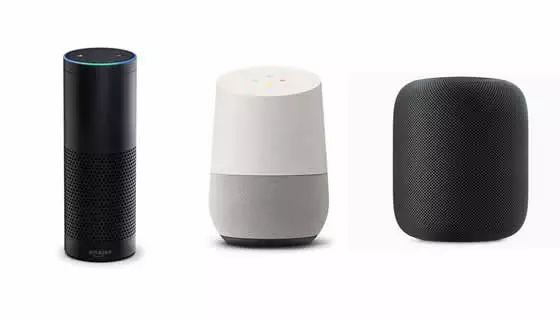
Take the popular application of NOR Flash in smart speakers as an example (each smart speaker has at least one NOR Flash). Market analysis company Canalys released a report predicting that global smart speaker sales will exceed 30 million units in 2017, confirming the forecast made by Zhixia Dongxi based on industry chain information last November. It further predicts that by the end of this year, global shipments of smart speakers will reach 56.3 million units, and 2018 will be a “decisive year” for the popularization of smart speakers. What about the situation of smart speakers in China?
With the influx of internet giants, voice interaction ecosystems have been established. Although it has not reached a “hundred-speaker war,” dozens of smart speaker products have been launched; the overall market scale has reached a million-level, with initial user education and broad market prospects. Several quality enterprises have emerged in various segments of the industry chain, with specialized voice chips, quality solution providers, and voice technology providers flourishing, gradually expanding production capacity and showing a thriving state. Dozens of smart speaker products have entered the market, with product performance stabilizing and diversifying. In 2017, especially in the second half, players in the smart speaker market, from internet giants like Alibaba, Baidu, and JD to mobile phone manufacturers like Xiaomi, traditional manufacturers like Lenovo and Haier, international audio giants like Sony and Sonos, mobile operators like China Mobile and China Telecom, and smart hardware startups like Turing and Rokid, as well as internet content companies like Ximalaya, have all launched their own brand of smart speakers, making smart speakers a cross-industry and cross-field product.
Additionally, some lesser-known startups targeting the B-end, such as my friend’s company Mediawin and Wenzhi Technology, as well as Caiyi Life, have also launched smart speaker solutions and products. More traditional Bluetooth speakers and traditional audio industries are expected to enter the market. According to industry insiders, the total shipment of smart speakers in 2018 is expected to exceed 200 million units.
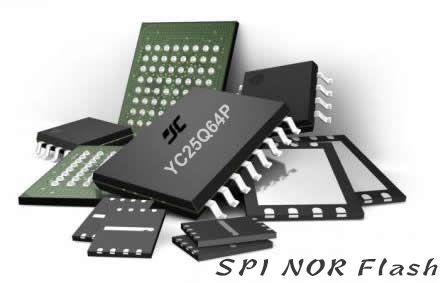
In the past two years, the popular application of SPI NOR Flash has been in mobile full-screen touch display circuits, TDDI AMOLED for 8Mb (Full HD) or 32Mb (QHD), with a market space of around $240 million in 2018. Considering that some driver ICs embed NOR Flash, a significant portion still requires external NOR Flash due to different chip high-voltage processes (12V and 28V).
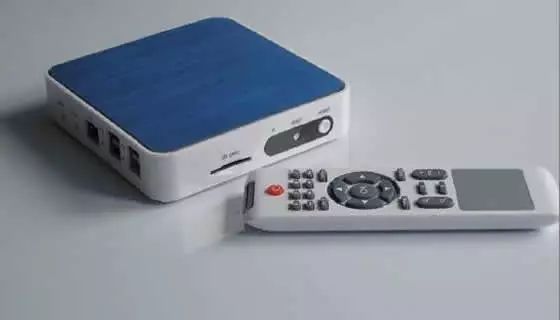
Market for SPI NOR Flash/SPI NAND Flash Applications
The router market is also experiencing significant growth. Domestic high-speed broadband construction is in full swing, with operators continuously increasing speeds and reducing costs. In some cities, home broadband has already started at 50M, with 100M and 200M broadband increasingly entering homes, and even gigabit broadband is beginning to be offered. In the face of high-speed broadband networks, outdated wireless routers cannot provide users with a smooth high-speed internet experience on mobile devices and will be eliminated. Routers that support fiber broadband high-speed wireless connections are seizing the opportunity for a “revolution.” The leading international brands in routers include Netgear, ASUS, Google, Linksys, TP-LINK, UBNT, D-Link, Tenda, Huawei, Phicomm, Xiaomi, and 360, with TP-LINK being the largest global supplier. In recent years, they have also begun to enter the optical modem market (the optical modem I use at home is branded TP-LINK), with ASUS being the second-largest brand. It is also important not to overlook the significant shipments from second and third-tier brands, with one router manufacturer (B-link) shipping around 300,000-400,000 units per month. Data shows that in the first half of 2017, the overall sales of home routers accounted for nearly 17.8%, a noticeable increase of 1.2% compared to the first half of 2016; a 7.9% increase compared to the first half of 2015; and a 15.8% increase compared to the first half of 2014, maintaining a high growth rate for four consecutive years. The smart router market has maintained good growth momentum and is accelerating its in-depth development, with the speed of product updates also continuously increasing. From 2016 to 2017, gigabit routers grew by 36%, and with the popularization of gigabit broadband, router upgrades will become increasingly intense. As router functions increase, some manufacturers have already used SPI NOR Flash with capacities of up to 256Mb, while smart routers are using larger capacities of 1Gb-2Gb of SPI NAND Flash.
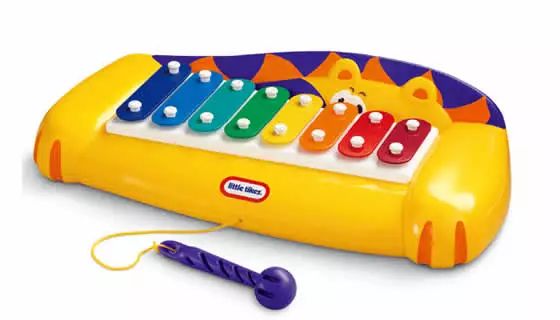
In the electronic education and smart toy market, SPI NOR Flash is currently mainly used in early education sound toys, electric smart toys (robots, robotic animals, etc.). The original application mainly used OTP (One Time Programmable) voice ICs. As toys become more functional and AI voice recognition applications increase, the demand for flash program capacity has surged due to massive edge data applications. Typically, these toys use a combination of DSP + external SPI NOR Flash + MCU to meet functional requirements. The current capacities of SPI NOR Flash used range from 4Mb to 128Mb. In the early days, domestic SPI NOR Flash had poor anti-interference capabilities, often leading to program loss and crashes in toys with motors, making most applications hesitant to use domestic brands. However, with the improvement of domestic design capabilities, such issues have become rare. Interestingly, some customers still ask, “Can your Flash be used in toys with motors?” It seems that many have indeed stumbled on this issue. Basic applications in toys can use single or dual-channel chips with ordinary transmission speeds, but for more complex functions or applications requiring minimal recording delay, fast four-channel chips are necessary. The working voltage of SPI NOR Flash is divided into 1.8V/3.3V, and it is crucial not to choose incorrectly based on the power supply situation.
Audio market: Mainly applied in the digital echo processing part of audio equipment, DSP + SPI NOR Flash (64Mb is the mainstream application). Previously, karaoke audio mainly used analog echo processing chips, with Taiwan’s Pucheng Technology being the most famous. With the widespread application of DSP (the mainstream chip being Taiwan’s Jienrong Technology DSP) and storage chips, the unit price is currently very low, so mainstream amplifiers with karaoke and square dance karaoke machines now use digital echo circuits. Another application is the feedback suppression circuit in stage audio, which also uses DSP + SPI NOR Flash. Currently, a large number of digital mixing consoles also extensively use SPI NOR Flash chips.
The NOR Flash market is expected to maintain double-digit growth in the coming years, with a neutral outlook for a slight and steady increase in production capacity.
Supply Relationships of NOR Flash:
From a supply perspective, there is an overall contraction, with Micron gradually exiting the market, CYPRESS exiting low to medium capacity, and Taiwanese and mainland manufacturers expanding production. Under a neutral outlook, we expect global NOR production capacity in 2017/18/19 to be 201.6/229.5/259.8 thousand wafers per month, with YOY changes of -5.81%/13.84%/13.22% respectively.
Micron has ceased production of its 8-inch NOR production line, corresponding to a monthly capacity of 20,000 wafers, and we expect its other 12-inch line, with a monthly capacity of 12,000 wafers for automotive and industrial control products, may also exit in the coming years.
On the other hand, CYPRESS has recently announced its continued exit from low to medium capacity NOR, focusing instead on the automotive and industrial control sectors. At the 2017 CYPRESS analyst meeting, CEO Hassane El-Khoury stated that the company’s goal for NOR is to maintain a gross margin of 50%, while traditional applications generally have a gross margin of around 25% (GigaDevice’s storage segment had a gross margin of 25% in 2016; Macronix had a gross margin of 24% in 2016). Therefore, the company will focus on high-end markets such as automotive and industrial control. CYPRESS has already exited some traditional markets, corresponding to a market scale of $80 million, and it is expected that in the next 2-4 years, its production capacity will be reduced to below 50%.
On the other hand, Taiwan and mainland manufacturers are expected to continue expanding production to seize market share. According to plans from major Taiwanese manufacturers like Winbond, Macronix, and Licheng, there are clear expansion plans for the coming years, with Licheng even gradually transferring LCD driver IC production to its Hefei factory, using the spare capacity to produce NOR, with a maximum capacity of 24,000 wafers per month (12-inch). Regarding mainland NOR expansion, we maintain a cautious watch. Unlike competitors, domestic NOR production is mainly done by foundries, and NOR generally has the lowest gross margin products, so foundries typically do not actively increase NOR production capacity. Additionally, the upstream silicon wafers of domestic NOR giant Wuhan Xinxin are restricted by Japanese manufacturers, which is expected to impact the total supply of mainland NOR in the next one to two years. Another major player not to be overlooked in the supply side is GigaDevice’s 12-inch wafer factory. On October 27, GigaDevice announced a cooperation agreement to further promote development, signing an agreement with Hefei Industrial Investment Holding Group to collaborate on the R&D project for 19nm memory (including DRAM) in Hefei Economic and Technological Development Zone, with a project budget of approximately 18 billion RMB. Therefore, based on the above information, assuming no new entrants, under a neutral outlook, we expect global NOR production capacity in 2017/18/19 to be 201.6/229.5/259.8 thousand wafers per month (this data does not include the production capacity of GigaDevice’s 19nm wafer factory, which is expected to start mass production after 2020 and will not affect the supply side until then), with YOY changes of -5.81%/13.84%/13.22%.
Conclusion: With domestic IC design companies entering the storage product field, the import of mid-to-low-end applications of SPI NOR Flash will completely exit China. However, in fields such as automotive electronics, industrial control, robotics, aerospace, and military products, foreign products will still occupy a certain share. However, I believe that with the increase of domestic talent, the return of overseas industry elites, and national policy support, we will definitely occupy the high ground in the industry!
Author:Jiang Weihua, General Manager of Shenzhen Yichu Technology Co., Ltd., member of the electronics circle, engaged in the semiconductor industry for over 20 years, previously worked at Taiwan’s MCU manufacturer Youhua, Taiwan’s Yilong MCU agent, and Zhilian Weichuang (smart home solution provider). Contact email: [email protected]
Mobile Technology Information (mobile-info) is a WeChat public account that shares technology related to mobile products. Established for two years, it publishes annual trends in mobile industry technology development and collaborates with like-minded friends to share related technologies in mobile, VR/AR, smart wearables, components, materials, etc. We welcome everyone to follow the Mobile Technology Information WeChat public account;
Since February 2017, to better communicate with fans and readers of Mobile Technology Information, we have gradually established a series of fan groups. Before joining, please private message the administrator Lianjie0706 to explainindustry + role + work location; After confirming the situation, you will join different WeChat groups; new members are expected to help forward 2 articles to their moments, which is both a recognition of the mobile technology circle and a form of sharing.
Currently, Group 1 is for mobile product technology, and we welcome technical personnel from the mobile industry chain to join Group 1 of the mobile technology circle;
Groups 3/6/7 are mobile technology groups (initially scanned after reaching 100), Group 8 is for sales, Group 5 is for smart home, Group 9 is for VR, and Group 10 is for IC. In the future, we will integrate groups 3/6/7 into group 1 or open a new mobile technology group.
Group 2 is for structure and material process, and if you want to join, please apply to the administrator: t806060279;
In the future, Mobile Technology Information will open more WeChat groups, such as CAM groups, structure groups, or other professional groups, and we also welcome outstanding talents in various fields to act as group assistants (or group leaders, requiring a certain period of testing) to jointly develop new communication groups.